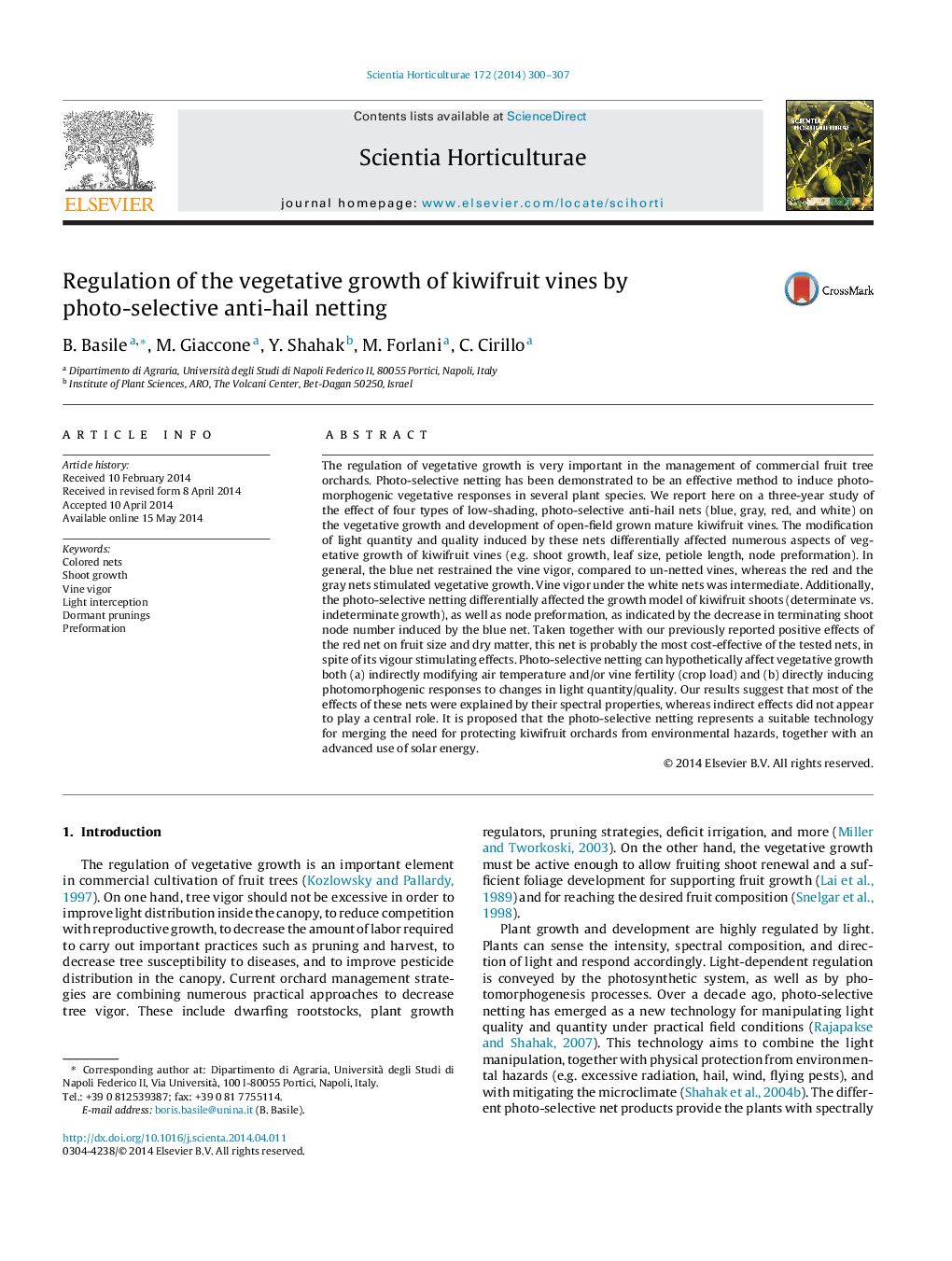| Article ID | Journal | Published Year | Pages | File Type |
|---|---|---|---|---|
| 4566845 | Scientia Horticulturae | 2014 | 8 Pages |
•The blue net restrained the vine vigor.•The red and the gray nets stimulated vegetative growth.•The photo-selective netting affected the growth model of kiwifruit vines.•Photo-selective netting provides a multi-benefit solution for kiwifruit growers.
The regulation of vegetative growth is very important in the management of commercial fruit tree orchards. Photo-selective netting has been demonstrated to be an effective method to induce photomorphogenic vegetative responses in several plant species. We report here on a three-year study of the effect of four types of low-shading, photo-selective anti-hail nets (blue, gray, red, and white) on the vegetative growth and development of open-field grown mature kiwifruit vines. The modification of light quantity and quality induced by these nets differentially affected numerous aspects of vegetative growth of kiwifruit vines (e.g. shoot growth, leaf size, petiole length, node preformation). In general, the blue net restrained the vine vigor, compared to un-netted vines, whereas the red and the gray nets stimulated vegetative growth. Vine vigor under the white nets was intermediate. Additionally, the photo-selective netting differentially affected the growth model of kiwifruit shoots (determinate vs. indeterminate growth), as well as node preformation, as indicated by the decrease in terminating shoot node number induced by the blue net. Taken together with our previously reported positive effects of the red net on fruit size and dry matter, this net is probably the most cost-effective of the tested nets, in spite of its vigour stimulating effects. Photo-selective netting can hypothetically affect vegetative growth both (a) indirectly modifying air temperature and/or vine fertility (crop load) and (b) directly inducing photomorphogenic responses to changes in light quantity/quality. Our results suggest that most of the effects of these nets were explained by their spectral properties, whereas indirect effects did not appear to play a central role. It is proposed that the photo-selective netting represents a suitable technology for merging the need for protecting kiwifruit orchards from environmental hazards, together with an advanced use of solar energy.
